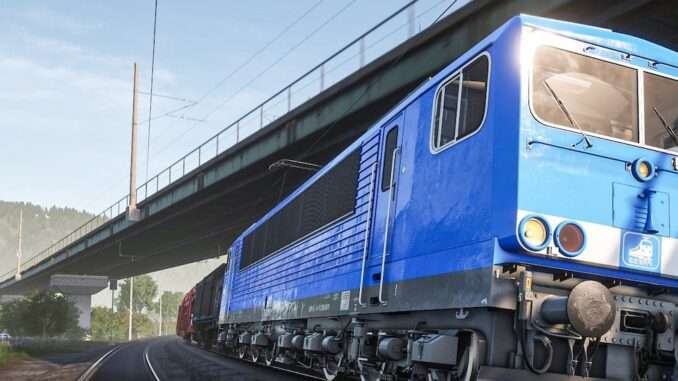
Training Center 8F Steam Locomotive
Overview
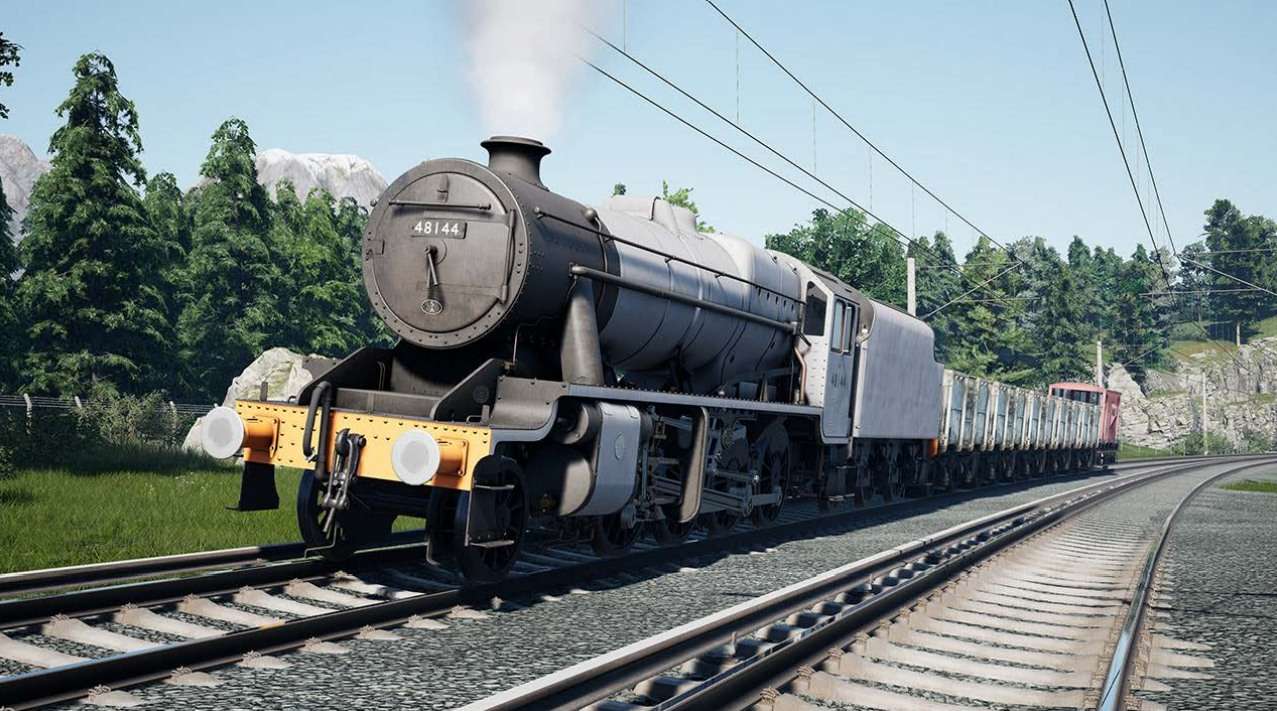
A freight-orientated derivative of the famed Black 5, the Stanier Class 8F filled a gap in the LMS fleet from its introduction in 1935, quickly proving itself as a capable hauler, its 2-8-0 wheel layout and smaller-diameter driving wheels trading speed for incredible hauling capacity. It didn’t take long for the first few dozen locos to roll out of Crewe Works, however, the 8F would quickly see a rise in production rate, after being chosen as the standard locomotive design to aid in the Second World War.
Construction of additional locomotives began across the country, with LNER and Southern tools being put to use building LMS metalwork. Batches of 8Fs were also destined for overseas use, and by the time production ceased, 852 of the locos had been built. Preservation of the class is few and far between, but a small handful of examples remain, although as of 2023, only one is operational.
The 8F’s stature makes it a solid steam loco to learn the ropes on, and if this freight legend takes your fancy, you can experience it in duofold historic fashion, available in both Liverpool-Crewe and Peak Forest!
- Manufacturer: London Midland Scottish Railway
- Build Location: Multiple in England and Scotland
- Build Date: 1935-1946
- Number Built: 852 locos
- Whyte Notation: 2-8-0
- Cylinders: Two, outside
- Fuel: 9.1 Tons of Coal
- Water Capacity: 18000 Litres
- Tractive Effort: 32440 lbf (144.30 kN)
- Length: 19.22 Metres (63 ft)
- Weight: 73.26 Metric Tons
- Top Speed: 100mph (160 km/h)
Training Center 8F Steam Locomotive Footplate – 1/2
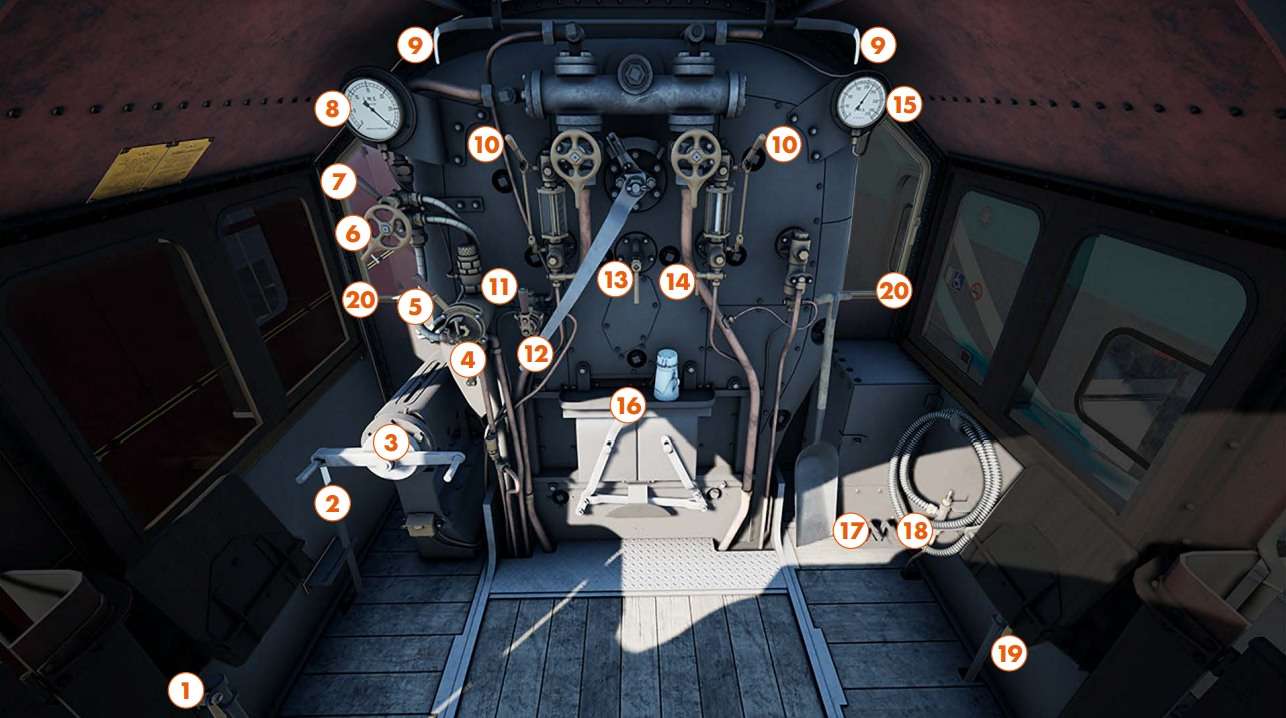
- 1 – Live Injector Trim Valve
- 2 – Cylinder Cocks Lever
- 3 – Reverser
- 4 – Steam Brake Handle
- 5 – Combination Brake Handle
- 6 – Large Ejector
- 7 – Small Ejector
- 8 – Vacuum Brake Gauge
- 9 – Whistle
- 10 – Gauge Glass Isolating Cock
- 11 – Sander
- 12 – Regulator
- 13 – Blower
- 14 – Gauge Glass Drain
- 15 – Steam Pressure Gauge
- 16 – Firebox Door
- 17 – Rear Damper
- 18 – Front Damper
- 19 – Exhaust Injector Trim Valve
- 20 – Opening Front Windows
Training Center 8F Steam Locomotive Footplate – 2/2

- 21 – Handbrake
- 22 – Coal Door
- 23 – Exhaust Ejector Water Valve
- 24 – Live Ejector Water Valve
- 25 – Cab Lamp
- 26 – Footplate Access Doors
Procedures & Unique Features
Firing
- Steam locomotives in Train Sim World have 3 modes of firing, offering multiple levels of assistance.
- Automatic firing means the AI fireman will be opening and closing the firebox, dampers and blower, and water injectors by itself, this is the recommended mode for most players.
- Assisted firing will handle the injectors, dampers and blower, but the player must open the firebox to allow the AI fireman to put coal in.
- Manual firing leaves all the dampers, blower and firebox timing upto the player, the AI fireman will still be in control of the injectors and shovelling coal.
How to gain speed
- Driving a steam locomotive is not like a diesel or electric, you must be patient and work with, not against the locomotive in order to get it moving and upto speed.
- Much like gears in a car, you should start with the Reverser fully in the direction of travel, and only apply gradual amounts of power with the Regulator.
- As you gain speed, slowly wind back the Reverser as you apply more power through the Regulator, you can wind it all the way back to the mid 20% range at the higher speeds, while aiming for 80-100% of regulator.
- Your main goal should be to maximise acceleration, while maintaining boiler pressure, excessive loss of pressure will result in a stalled train, meaning you have to wait for it to rebuild before moving again.
- Remember to have the Cylinder Cocks open while stationary, and remember to close them shortly after departing, they are key in ejecting water out of the cylinders which could otherwise cause damage.
Braking
- Steam locomotives most often have manually lapped vacuum brakes; what this means is you need to apply as much braking pressure as you need, and then attempt to maintain or alter that by using the handle to constantly apply and release, in combination with the Large Ejector Headcodes.
- Steam locomotives do not have headlight controls, instead, they use a series of manually placed head lamps on the front or rear of the loco, and each configuration has a specific meaning.

- A – Express Passenger
- B – Stopping Passenger
- C – Parcels, fish/livestock/perishables
- D – Express freight or livestock, at least 30% fitted
- E – Express freight with at least 4 fitted vehicles at front
- F – Express freight, all unfitted stock
- G – Light engine, or engine with 1 or 2 brake vans
- H – Through freight or ballast train
- J – Through mineral or empty wagon train
- K – Pickup/branch freight or short-haul mineral/ballast
Fitted/unfitted refers to the wagons, as not all wagons in the steam era were equipped with brakes.

Lastly, there is one more headcode a loco can display, all 4 lamps indicates a train as the highest priority, the Royal Train.


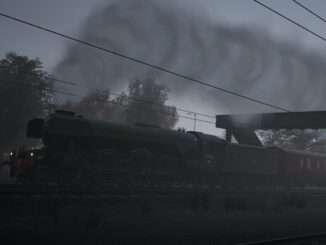
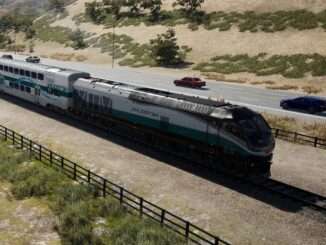
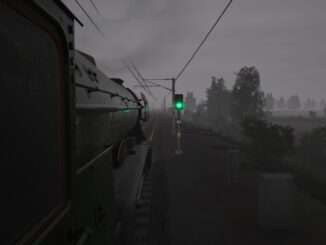
Be the first to comment